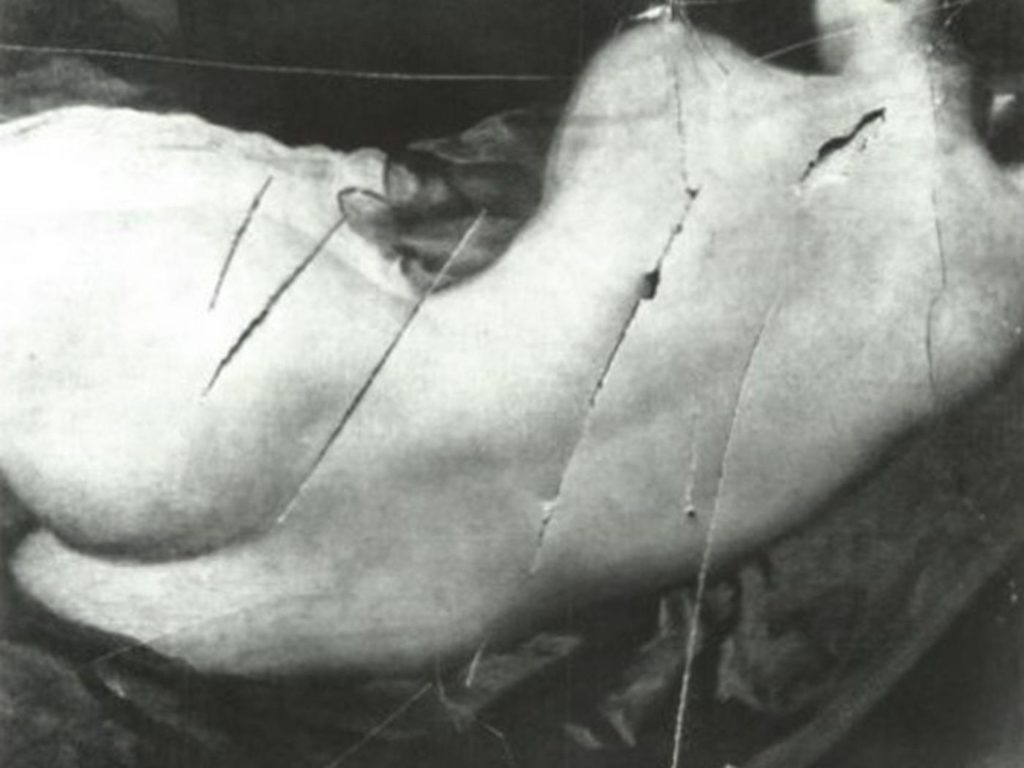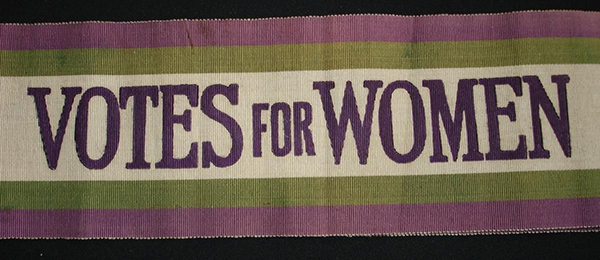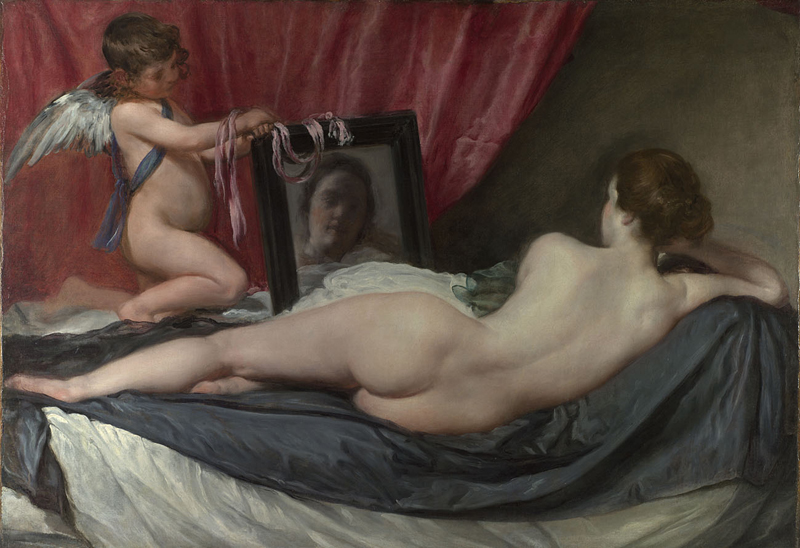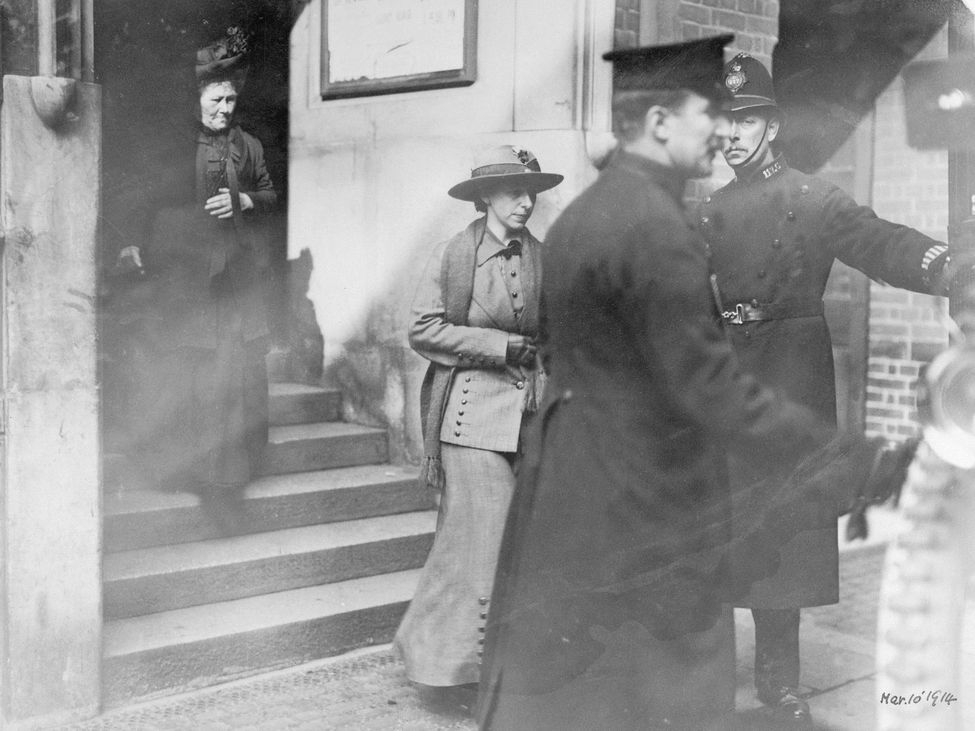The needle and the damage done to Velazquez’ Rokeby Venus by Mary Richardson

Green, purple and white
In the UK, these were the colours of the Women’s Social and Political Union from 1908. You might have noticed that this colour scheme was precisely the one chosen for Women’s Art Tours. In truth, the British Suffragettes didn’t have much of a choice left across the spectrum as blue and red combined with white had been selected by many political organisations before. Purple, still embodying women’s rights these days, was in the past associated to royalty, but it also embodied otherwordliness and wisdom. According to WSPU leader and activist Emmeline Pankhurst, purple stands for dignity and female instinct’s of freedom.
During the Edwardian era, a light shade of purple was worn by women entering a period of half-mourning, thus stopping the display of black clothes. Interestingly, this colour stands in between pink and blue, traditionnally ascribed to gender roles in Western societies. Green often represents Nature, spring and renewal, hope and fertility. White signifies purity, but it was also widely preffered to wear by women at this time.

What about art, you’d say? Provoking scandal without hurting or killing men: well, the Suffragettes protested by vandalising shop windows, museums, and monuments, when the campaign got particularly violent and the government turned a cold shoulder unto their claims. Churches such as Westminster Abbey, castles and manors of the wealthy were being bombed. Besides, the Suffragettes disliked idealised representations of feminity as objects of the male gaze.
destroy the most beautiful woman
On 10th March 1914, a former Fine Arts student, Canadian-born Mary Richardson (c.1882 – 1961) entered the National Gallery with a butcher’s knife hidden in her sleeve and attacked Velasquez’ Rokeby Venus, in order to “destroy the picture of the most beautiful woman in mythological history”. Before being evacuated onto Trafalgar Square, she could slash the painting about 5 times.

Oil on canvas, 122.5 x 177 cm, National Gallery, London
Painted in the context of the Spanish Inquisition, this canvas has, to this date, been considered as Velazquez’ only nude. The goddess’ body attracts our attention through the tones of her skin, whose sensuous curves are echoed in the shapes of the sheets and the bed. Besides, she reveals only her back to us, while the blurry reflection of her face appears in the mirror held by her son Cupid. This puzzling picture differs from more traditional images of Venus bathing within some picturesque landscape.
Deeds not words
Mary Richardson just so wished to oppose herself against these languid depictions of female characters in art. In fact, it was a way to catching the authorities’ attention after years of arrest, torture, force-feeding and hunger strikes, protesting “against the Government for destroying Mrs Pankhurst, who is the most beautiful character in modern history. Justice is an element of beauty as much as colour and outline on canvas“.

Today, there’s almost no trace left of the chopper marks on the painting, duly restored, you have to be extremely close to it to make out the few remaining alterations. If you tour the National Gallery with a guide, this event is only barely mentioned, often with some notes of awkwardness : www.nationalgallery.org.uk/paintings/diego-velazquez-the-toilet-of-venus-the-rokeby-venus. Not even talking of the labels and info on the website, taking pains to omit this incident…

5 replies on “Slashing Venus: Suffragettes and vandalism”
What a fascinating exploration of the suffragette movement and its complex relationship with art! It’s intriguing to think about how vandalism was used as a form of protest and expression. I appreciate how the post highlights the ongoing struggle for women’s rights and how art can serve as a powerful vehicle for change. Thanks for shedding light on this important topic!
My pleasure. I’m glad you enjoyed the article. Don’t hesitate to share it online!
Best,
Laure
This post brilliantly connects the dots between art and activism! The suffragettes’ actions, though controversial, were pivotal in the fight for women’s rights. It’s fascinating to see how their vandalism was not just a rebellion but a powerful statement for change. Thank you for shedding light on this important piece of history!
Thank you for these kind words and amazing insight into the article.
This post sheds light on a fascinating yet often overlooked aspect of the suffragette movement. The connection between art, activism, and vandalism really challenges our perceptions of both. It’s interesting to see how these acts were not just about destruction, but a form of powerful protest. The nuanced discussion around the complexities of their actions adds depth to our understanding of women’s fight for rights. Thank you for highlighting this important topic!